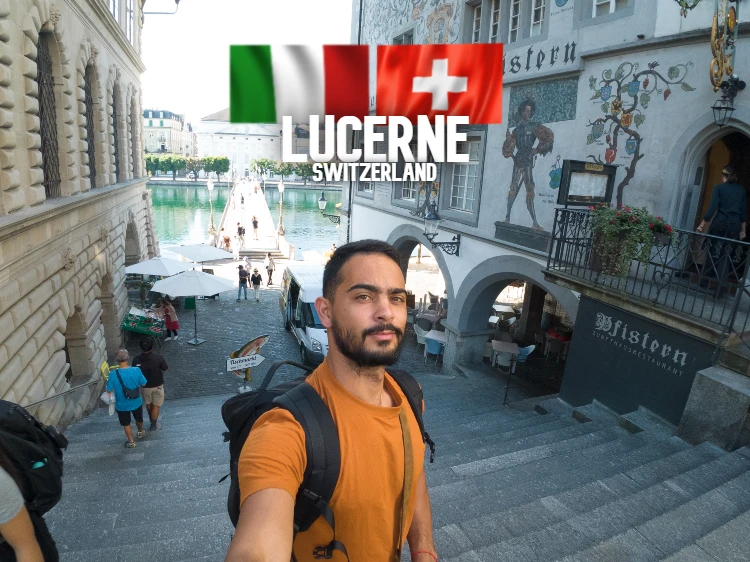Hey there! Have you ever heard about those amazing tax refunds you can get by shopping in Europe? It’s a fantastic way to save money, but if you have no idea how to get them, don’t worry—I’ve got you covered! In this guide, I’ll walk you through the entire process of getting a VAT refund while shopping in Europe. I’ll also share my personal experiences to make it easier for you to navigate. Let’s dive in!
Understanding VAT
First things first, let’s talk about VAT. VAT stands for Value Added Tax, and it’s automatically included in the price of everything you buy in Europe. Unlike in the United States, where taxes are added at the time of purchase, in Europe, the tax is already included in the displayed price. The VAT percentage can vary from country to country. For example, France and England have a VAT rate of 20%, while Italy’s VAT rate is 22%. If you want to know the VAT rate of a specific country, you can easily find a list online.
Who is Eligible for a VAT Refund?
As a non-EU resident, you are eligible to get a portion of the VAT back on your purchases. The process works like this: when you shop at a store that offers VAT refunds (many luxury stores do), you can qualify for a refund if you spend €175 or more in that store. It’s important to note that different stores might use different VAT refund programs like Global Blue or Premier Tax-Free, but the process remains the same regardless of the program used.
Reaching the Minimum Threshold
Now, let’s say you plan to make several small purchases that don’t individually reach the €175 threshold. In that case, I recommend visiting a department store that houses various brands. By collecting receipts from all your purchases, you can reach the required threshold, even if you didn’t spend €175 with a single brand. Stores like Selfridges, Harrods, Liberty, or Galeries Lafayette are excellent options. For instance, you could buy a bag for €95 from Longchamp and then head to Gucci to purchase a scarf or a wallet for €100. When you add up those two purchases, it totals €195, surpassing the minimum threshold.
The VAT Refund Process
Once you’ve made your purchases, it’s time to start the VAT refund process. If you’re shopping at a department store, they usually have a dedicated area for VAT refunds. Simply head there with all your receipts. The staff will consolidate your receipts into a single document and provide you with a form for the VAT refund from that department store.
If you’re shopping at a standalone boutique like Chanel or Louis Vuitton, you can go directly to the register. The cashier will assist you in filling out the necessary paperwork. Make sure to have your passport with you, as they’ll require your passport information for the refund process. In most cases, they’ll provide you with the receipt for your purchase and separate forms for your tax-free documents.
Cash Refund or Credit Card Refund?
At the point of refund processing, you’ll be asked whether you prefer to receive your refund in cash or via credit card. Each option has its pros and cons.
If you choose a credit card refund, you’ll get a higher refund amount, as fewer fees are deducted. However, the refund might take a bit longer to be credited back to your card. It’s worth noting that the exchange rate at the time of credit might affect the final refund amount.
On the other hand, if you choose a cash refund, you’ll receive the cash at the airport immediately. This means no waiting for weeks or months. However, the refund might take a bit longer to be credited back to your card. It’s worth noting that the exchange rate at the time of credit might affect the final refund amount.
On the other hand, if you choose a cash refund, you’ll receive the cash at the airport immediately. This means no waiting for weeks or months. However, keep in mind that there will be a service fee deducted from your refund amount, which varies depending on the refund company. The cash refund option is particularly useful if you’re leaving the EU from an airport where there are VAT refund counters.
Getting Your VAT Refund Form Stamped
Before leaving the EU, you must get your VAT refund form stamped by customs. This step is crucial as it proves that you are taking the items out of the country. Look for the customs office or desk at the airport, usually located after the security check-in but before the boarding gates. Present your purchases, receipts, and passport to the customs officer. They will inspect the items and stamp your refund form. It’s essential to ensure that you have enough time before your flight to complete this process, as queues at the customs office can be long, especially during peak travel times.
Submitting Your VAT Refund Form
Once your form is stamped, you have two options for submitting it: either by using a mailbox or at a refund counter. If you have chosen a credit card refund, you can simply drop the stamped form into the mailbox provided. If you prefer a cash refund, you’ll need to locate the VAT refund counter. These counters are usually located near the departure gates, and they are operated by the refund companies like Global Blue or Premier Tax-Free.
At the counter, present your stamped form, receipts, and passport. The staff will verify your documents and process the refund. If you chose a cash refund, you’ll receive the refund amount in the local currency or another currency of your choice. Remember to keep the refund receipt provided by the staff, as you may be required to show it at the boarding gate along with your items.
Final Tips and Recommendations
- Plan your shopping strategically to reach the minimum spend threshold for VAT refunds.
- Keep all your receipts organized and in a safe place.
- Familiarize yourself with the VAT refund process of the specific stores or refund companies you plan to use.
- Allow sufficient time at the airport for customs stamping and refund submission.
- Double-check the accuracy of your refund form, ensuring your passport information is correct.
- Consider the pros and cons of cash and credit card refunds before making a decision.
- Be aware of the service fees associated with cash refunds and factor them into your calculations.
Remember that VAT refunds are a privilege for non-EU residents, so take advantage of the opportunity to save some money while enjoying your shopping experience in Europe. Safe travels and happy shopping!
What Comes After you decide between Cash refund or Credit Refund?
Once you’ve decided whether you want a cash refund or a refund on your credit card, you can proceed with the process. When making your purchases, make sure to let the cashier know that you want a VAT refund. They will provide you with the necessary paperwork.
On the day of your departure, as you head to the airport for your international flight, remember to allocate extra time for the refund process. It’s recommended to arrive at least three hours early, especially during peak tourist seasons or when major events are taking place. This will ensure that you have ample time to complete the refund procedure.
Upon reaching the airport, locate the VAT refund office, usually situated outside the security check-in area. Bring all your purchases and paperwork with you. At the office, you’ll find kiosks where you can input your passport information and scan the barcodes on your documents. The screen will either flash green, indicating that everything is in order, or red, signaling that further verification is required.
If you receive a green light, you can proceed without any additional steps. You won’t need to show your items to anyone, and you can simply scan the documents, leave, and continue your journey. However, if the light flashes red, you’ll need to present your items and paperwork to an officer at the window. They will review your documents, stamp them, and verify that you’re exporting the items out of the country.
After the verification process, you’ll either need to mail the stamped forms or get a cash refund, depending on your chosen option. If you selected a credit card refund, you can drop the stamped forms into the designated mailbox. The refund will be processed, and it may take anywhere from one week to six weeks for the amount to appear on your bank statement.
If you opted for a cash refund, you’ll need to visit a separate window designated for cash refunds. Present your scanned or stamped forms, and they will assist you in receiving the cash refund. Remember to seal your paperwork in the provided envelope and deposit it in the large post boxes located in the VAT refund area. These boxes are usually brightly colored and easy to spot.
Now, all you have to do is wait for the refund to be processed. Keep an eye on your bank statement, as the refund amount should appear once the processing is complete. Congratulations! You’ve successfully saved money through the VAT refund process.
To ensure your eligibility for a VAT refund, remember these key parameters:
- Non-EU resident: Only non-EU residents are eligible for VAT refunds.
- Minimum spend: Your purchases must exceed the minimum spend threshold, which is typically around 175 euros.
- Timely departure: You must leave the country within one month of the purchase date.
Keep in mind that not all items are eligible for a VAT refund. Only tangible, non-consumable items that can be exported out of the country qualify. Additionally, Switzerland, Norway, and Turkey are not part of the EU, so if you make purchases in these countries, you’ll need to file your VAT refund paperwork there before leaving for another country.
One important tip is to avoid placing luxury purchases in your checked baggage. Keeping them with you as carry-on items ensures their safety and allows for potential verification if required. Checked luggage can get lost, items can go missing, and fragile items may be damaged. Taking care of your valuable purchases personally is the best way to protect them.
Vat Refund for EU-Residents
If you’re a resident of the EU and you’re looking to save money on tax refunds, there’s a great way to do it—by purchasing items duty-free at an airport. One of the main airports for duty-free shopping is Heathrow in London, which offers a wide range of stores. Even if you live in London or anywhere else in the EU and you’re flying out of a major airport with plenty of stores you like, you can shop there and automatically save 20% by taking advantage of the duty-free prices. This applies to American citizens as well, who can shop at Heathrow without having to worry about tax refunds because they’ll be saving on taxes upfront.
However, there is a caveat when it comes to specific items. If you’re looking for something like a limited-edition or hard-to-find item, chances are it won’t be available at the airport. In that case, you would still need to go through the tax refund process.
It’s important to note that there are other fees involved when shopping overseas, such as customs and duties fees when you return to the US. While you may have saved money on taxes abroad, you may still have to pay taxes on those items once you’re back in the US. Currently, each person is allowed $800 in tax-free purchases. If you’re traveling with a group or family, each person is entitled to that $800, regardless of who made the purchases. For example, if three people are traveling together, they would have a total of $2,400 to spend without worrying about additional fees. Any amount exceeding the $800 limit per person would be subject to customs and duties fees, which are currently set at 3%.
While the customs and duties fees may not seem significant for smaller purchases, they can add up if you’re buying expensive items. For instance, if you buy an Hermès Birkin bag for $10,000, the fees will increase accordingly. Keep in mind that the VAT refund process is the main focus here, so I won’t delve into too much detail about customs and duties. However, if you have any questions about them, feel free to let me know in the comments section below.
Real Example on Vat Refund
Now, let’s dive into some real-world examples of how much you can save by shopping in Europe. People often choose to shop in Europe not only for the VAT refund but also because the actual prices of items are often lower compared to other regions. It’s crucial to keep a close eye on exchange rates, especially if they are fluctuating significantly, as even a small difference can affect your overall purchase price. Let’s look at some numbers to illustrate the savings.
During my recent trips to Europe, I made purchases from Chanel and Louis Vuitton, so I’ll provide examples from these brands. You can check the exact prices of items online by visiting the brand’s respective websites for the country you’re interested in, such as the French Louis Vuitton website (FR.louisvuitton.com). This way, you can see the prices in euros and calculate the exchange rate and potential refund amount in advance.
Here are the details of my purchases:
- Chanel:
- Card holder: 300 euros, VAT refund: 50 euros
- Boy bag: 3,980 euros, VAT refund: 663.33 euros Total purchase price: 4,280 euros Total VAT: 713.33 euros Actual refund received: 556.40 euros Savings: $754.44
- Louis Vuitton:
- O Case: 420 euros, VAT refund: 70 euros Total savings: $129.04
- Louis Vuitton:
- Passport holder: 225 euros, VAT refund: 37.50 euros Total savings: $49.29
To calculate the savings in US dollars, I used the exchange rate at the time of my purchases, which was 1 euro = 1.19 US dollars. Please note that exchange rates fluctuate, so it’s essential to check the current rates before making any calculations or decisions.
In total, by shopping in Europe and taking advantage of the VAT refund, I saved approximately $932.77 on my purchases. These savings can vary depending on the items you choose, their prices, and the VAT rates in different countries.
Remember that the VAT refund process involves certain steps and requirements. You’ll need to present your passport, complete a VAT refund form, and show your purchased items at the customs office upon leaving the EU. The refund can be obtained in cash at the airport or through a credit card refund, depending on the specific refund service provider.
It’s crucial to keep all the necessary documents, such as receipts and refund forms, as you’ll need them during the refund process. Additionally, some stores might have a minimum purchase requirement to qualify for a VAT refund, so be aware of those conditions.
Lastly, if you’re planning to make significant purchases, it’s advisable to familiarize yourself with the specific VAT refund procedures and regulations of the countries you’ll be visiting. This way, you can ensure a smooth and successful refund process.
Please note that the information provided here is based on my personal experience and may not reflect the current VAT rates or refund policies. It’s always best to double-check with the official sources and consult the customs and tax authorities of the countries you plan to visit for the most up-to-date and accurate information.
I hope this information helps you understand the potential savings when shopping in Europe and utilizing the VAT refund process. If you have any further questions, feel free to ask!









